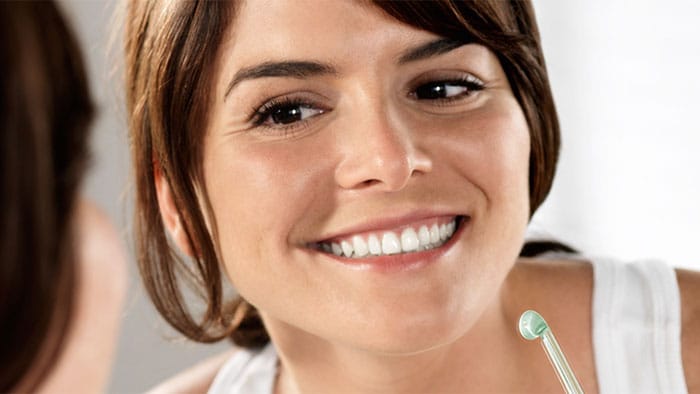
Stained teeth: how to treat discoloured teeth

Most of us grew up being taught the same simple oral care routine: brush your teeth with a soft toothbrush for 2 minutes, rinse your mouth with water and spit. Rinsing after brushing teeth does seem like a natural final step in keeping your mouth clean, ready for the day ahead. But are you supposed to rinse after brushing your teeth?
This guide explores common questions like “Should you rinse before or after brushing?” or “After brushing teeth, should you rinse with water?”. Keep reading to help you decide whether your oral care routine needs a small upgrade.
Do you rinse after brushing your teeth? Rinsing after brushing can feel like a natural, refreshing way to wrap up your morning or evening routine. But is it bad to rinse your mouth after brushing? Some experts say yes.
Fluoride is a common ingredient in toothpaste and is often linked to a reduction in tooth decay and improved dental health.1 Fluoride toothpaste is also effective at strengthening tooth enamel when applied directly and left to sit on your teeth.2
While it may feel like a natural response, rinsing after brushing your teeth with a fluoride toothpaste dilutes the protective effects of the fluoride.2 It is recommended not to rinse your mouth with water after brushing, so that the fluoride can sit on your teeth for longer, for the greatest preventive effect.3
If you’ve just learned that you shouldn’t rinse your mouth after brushing, you may be wondering what you should be doing instead. Generally, it is recommended that you:2
If you use a fluoride mouthwash, you should NOT use it to rinse your mouth straight after brushing. Instead, experts suggest using it at a different time of the day, such as after eating lunch, to allow the fluoride enough time to work its magic.3 Avoid rinsing your mouth with water or eating or drinking anything for 30 minutes after using a fluoride mouthwash, too.3
While it’s good to know that rinsing after brushing teeth isn’t the most effective method, it’s how you brush your teeth in the first place that is most important. Using the correct brushing technique and oral care tools are some of the best ways to ensure you are properly taking care of your mouth and helping the fluoride reach every surface of your teeth.
For a healthier, more effective clean, here are the recommended steps for brushing your teeth:
Brushing alone can’t reach between your teeth. Before brushing, using a dental floss or a power flosser like the Philips Sonicare Power Flosser 3000 daily can help remove plaque and food debris to support gum health and improve overall oral hygiene. With a nozzle that rotates 360 degrees, the Power Flosser 3000 can access hard-to-reach areas of your mouth and get a thorough clean in just 60 seconds.
Before you start brushing, it’s important to use a toothbrush that helps you get the most out of your routine. The Philips Sonicare DiamondClean Prestige 9900 is our most advanced sonic toothbrush, powered by SenseIQ technology that monitors pressure, motion, and coverage up to 100 times per second.
This intelligent toothbrush helps you to brush more effectively and gently, while the sonic action spreads fluoride toothpaste evenly around the mouth. The result? Every tooth surface is thoroughly coated, allowing fluoride to stay in contact with enamel for longer and deliver maximum protection.
Spend 30 seconds focused on each of the four corners of your mouth twice a day to ensure full coverage. Use a fluoride toothpaste to help protect and strengthen your teeth.
Brush your teeth gently in small circular motions away from the gum line. Remember to brush the outer and inner surfaces of each tooth.
After brushing teeth, should you rinse? Once you’ve finished brushing, avoid rinsing with water or mouthwash. Instead, spit out any excess toothpaste, and let the fluoride sit on your teeth to maximise its benefits.
Making small changes to your daily routine can have a big impact on your overall oral health. By skipping rinsing after brushing your teeth and simply spitting out the excess toothpaste, you allow the fluoride to stay on your teeth for longer. This helps strengthen enamel and keeps your teeth protected throughout the day when using a fluoride toothpaste. Pair this with an effective brushing technique and the right tools, and you’ll build a routine that supports long-term dental health.